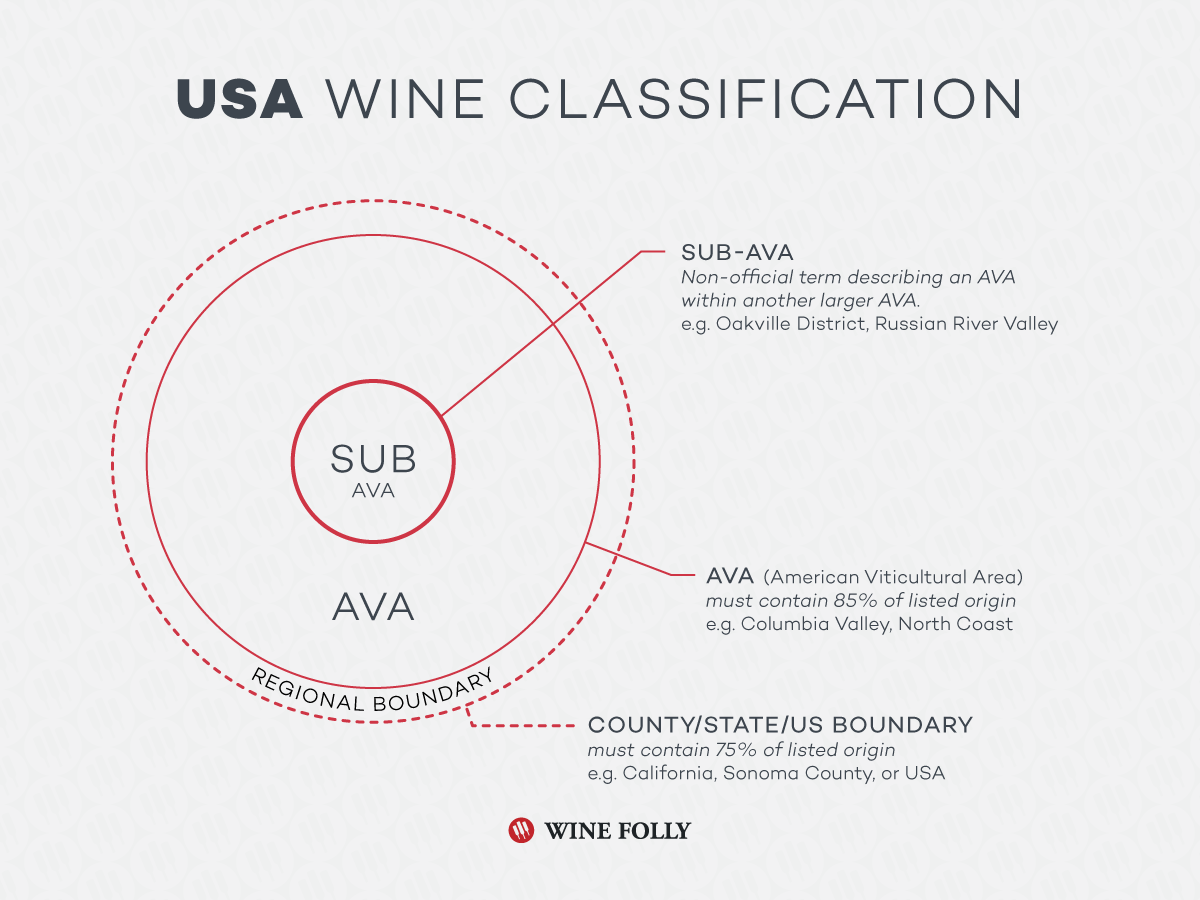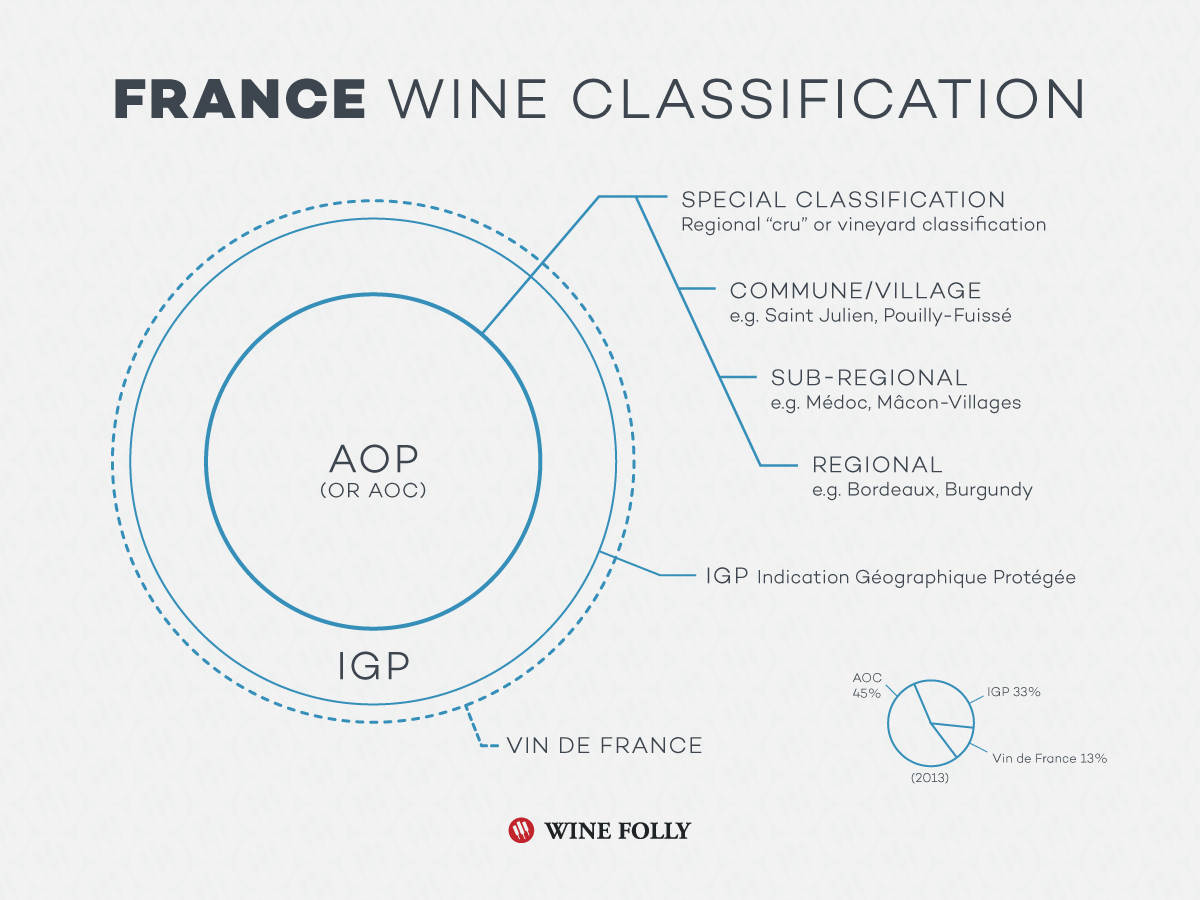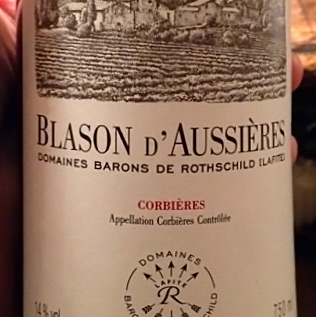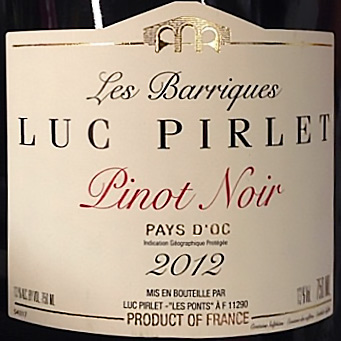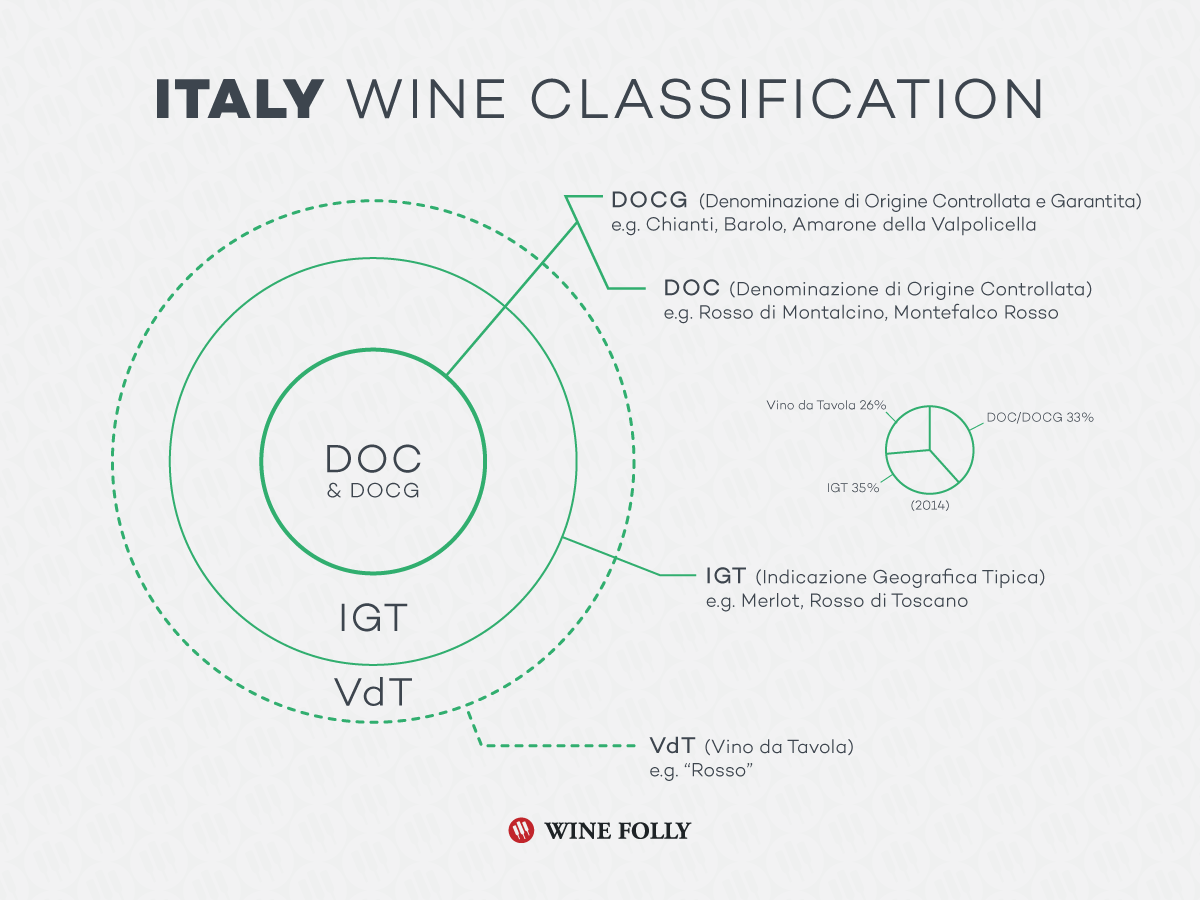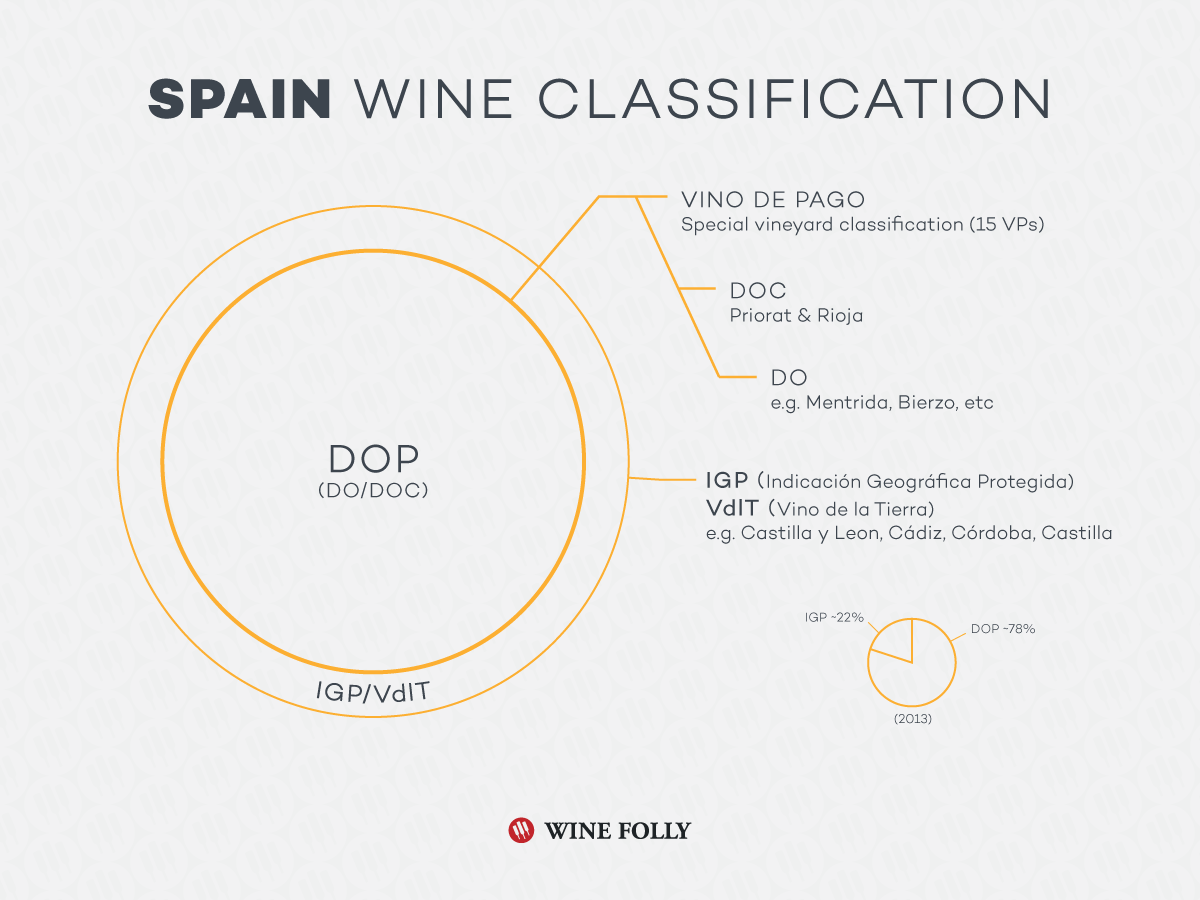There seem to be an infinite number of ways to classify and categorize wine these days. Though, none are quite so helpful–or quite as intimidating– as the appellation system.
Very basically, an appellation is how a country categorizes its wines by geo-political boundaries. Each appellation has laws and regulations that may dictate where the grapes were grown and how the wine was made.
Traditionally, the smaller and more specific the regions were considered best. While that might not always be the case today, it’s still quite helpful to become familiar with at least a handful of appellation rules. This way, you’ll be able to better spot quality.
To get you started, let’s look at a summary of the top 4 wine producing countries and how they classify–and qualify,–their wines.
Updated November 6th, 2018
United States
AVA: American Viticultural Areas
An American Viticulture Area (AVA) is a grape-growing area with unique geographic and cultural features. The AVA system began in 1980 and and has since expanded to include 242 AVAs across the United States.
Some AVAs, such as the Mississippi River AVA, span across millions of acres of land while others have only a few hundred acres. In order for a wine to carry an AVA label, at least 85% of the grapes must come from the listed AVA.
AVAs are a little confusing because there is no regional or quality-based hierarchy. Additionally, some AVAs are inside others. For example, Oakville AVA is a sub-appellation of Napa Valley AVA. And, the Napa Valley AVA is a sub-appellation within the much larger North Coast AVA!
TIP: Regions that are divided into sub-appellations tend to make higher quality wines… just an interesting observation.
France
AOP: Appellation d’Origine Protégée
France organizes wine with the Appellation d’Origine Contrôlée/Protégée (AOC/AOP) system which first started in 1937.
Today, there are over 360 AOCs in France and most are within 11 primary growing regions (e.g. Rhône, Loire, Alsace, Bordeaux etc.). The French AOP system has rules that apply to nearly every aspect of wine production, including grape varieties that may be utilized, minimum alcohol level, aging requirements, and even vineyard planting density.
Such meticulous management of a single industry may seem overwhelming, but the geographic label implies what winemaking regulations were in play and can therefore serve as a guide for consumers. For example, a Crémant d’Alsace Rosé is required to be 100% Pinot Noir. Thus, when you buy this wine you can expect a sparkling wine made from 100% Pinot.
It’s simply a matter of cracking the AOP code.
AOP/AOC
AOP is France’s highest and most rigid classification system. Wines labeled after appellation (e.g. “Sancerre”) will have a specific set of grapes they are legally allowed to use.
Vin de Pays (IGP)
This classification is the everyday French wine. The regional designation is less strict with more allowed grape varieties. You’ve probably seen some of these appellations in your grocery store! Names include Pays d’Oc, Comte Tolosan, and Côtes de Gascogne.
Vin de France
The most basic quality French wine.
Italy
DOC: Denominazione di Origine Controllata
The Denominazione di Origine Controllata (DOC) and Denominazione di Origine Controllata e Garantita (DOCG) system was first established in 1963 and today there are 329 different DOCs and 73 DOCGs. The Italian system was originally designed to champion the indigenous grapes of Italy by elevating wine made with Italian grape varietals to the highest tiers of the DOC system, DOCG. That’s not to say, however, that foreign grape varieties are anything to look down upon. In fact, producers make very high quality wines with French grapes, such as the Super Tuscan blend with Merlot and Cabernet. However, since the grapes are not of Italian origin, the wines are typically–and arbitrarily,– demoted to IGT status.
Here are some common Italian wine terms that are useful to know:
- Classico: Between the 1960’s and 1970’s many DOC boundaries were revised to include a larger area. The “Classico” denomination thus refers to the original smaller boundaries of the wine-making area. You can see an example of this on the Chianti Wine Map.
- Superiore: Superiore is often used as a production quality standard usually indicating a higher minimum quality of wine grapes and often a minimum aging requirement before the wine is released for sale.
- Riserva: Riserva is typically used as a production quality standard most often referring to extended aging of a wine prior to release. Many producers only make Riserva wines with grapes from exceptional vintages.
Spain
DOP: Denominación de Origen Protegida
The Spanish qualify their wines with the Denominación de Origen (DO) or Denominación de Origen Protegida (DOP) system. The Spanish system currently has 79 DOP’s, 2 DOC’s, 15 Vino de Pagos (VT) and 46 Vino de la Tierra (VdlT/IGP). The newest addition to the system was a single-vineyard category called Vino de Pago and many Spanish wine enthusiasts will agree that this category has some very intriguing wines.
Aging is a very important aspect of Spanish wines–especially Tempranillo,– so the country has an aging classification system as well. Keep in mind that each region may have slightly different rules attached to the following terms, so check with Wines of Spain if you want to know the specifics:
- Tinto/Roble: “Roble” literally translates to “oak,” but this style is characterized by having little-to-no oak aging.
- Crianza: This style has some oak and bottle aging, typically 9–12 months. For example, Rioja requires 12 months of aging.
- Reserva: This style is required to have both oak and bottle aging. Typically, Reserva wines will undergo an entire year in oak and sometimes an additional 2 years in the bottle.
- Gran Reserva: This style is required to have extended oak and bottle aging, which generally means up to 2 years in oak and up to 4 years in the bottle.
